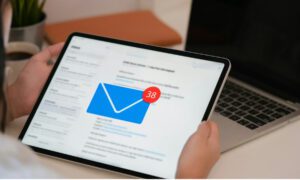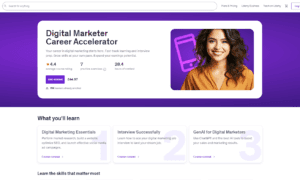Sending targeted emails to a group of recipients with the aim of engaging them, developing relationships, and encouraging particular actions, like making a purchase or signing up for a newsletter, is what typical email marketing is. It is a powerful tool for businesses to communicate directly with their audience, delivering messages, promotions, and updates.
Personalization is the practice of tailoring email content and messages to individual recipients based on their unique characteristics, behaviors, and preferences. It’s the secret sauce that transforms generic email campaigns into highly effective, engaging, and conversion-driven communication. Personalization not only improves the open and click-through rates of email marketing campaigns but also fosters a sense of connection between the sender and recipient.
The power of tailored content lies in its ability to resonate with recipients on a personal level. It goes beyond addressing the recipient by name; it’s about delivering content that speaks directly to their needs, interests, and buying journey. Tailored content can range from product recommendations and special offers to content that aligns with a recipient’s past interactions with the brand.
Key Elements of Personalization in Email Marketing
Customer Segmentation
- Demographic Segmentation: By using demographic segmentation, you may divide your email list into several groups according to age, gender, region, and income. For instance, a merchant of clothing might send emails with varied content to clients from different geographical areas or men and women.
- Behavioral Segmentation: Behavioral segmentation relies on analyzing how recipients interact with your emails and website. This data can include browsing history, purchase history, email engagement, and more. For instance, an online bookstore might send personalized book recommendations based on a customer’s previous book purchases.
Data Collection and Analysis
- Importance of Data: Data is the foundation of personalization. It allows you to understand your customers better, track their preferences, and measure the effectiveness of your email campaigns.
- Tools and Techniques for Data Collection: There are various tools and techniques available for collecting and analyzing data, such as email analytics, customer relationship management (CRM) systems, and website tracking tools like Google Analytics.
Creating Customer Personas
Customer personas are fictional representations of your ideal customers. These profiles include information about their demographics, interests, pain points, and behaviors.
For example, a tech company might create personas like “Gadget Enthusiast Emily” or “Business-Minded Dave” to guide their personalization efforts.
Understanding customer preferences is crucial for tailoring content. This includes knowing which types of content they prefer, their preferred communication channels, and their purchasing habits.
Implementing Personalization in Email Marketing
Dynamic Content Creation
Dynamic content allows you to customize email content elements, such as images, text, and product recommendations, based on recipient data.
For instance, an e-commerce site can dynamically display product recommendations based on a customer’s browsing and purchase history.
You might test different subject lines or product recommendations to see which resonates most with your audience.
Personalized Subject Lines and Preheaders
A compelling subject line is vital for getting recipients to open your emails. Personalization can involve using the recipient’s name or referencing their recent interactions with your brand.
Preheaders, the short text preview of an email, can also be personalized to provide additional context and encourage recipients to open the email.
Automation and Triggers
Automation allows you to send personalized emails at the right time based on triggers like a customer’s birthday, a recent purchase, or abandoned shopping carts.
For example, if a customer abandons their shopping cart, an automated email can be triggered with a reminder of the items left behind and possibly a special discount to incentivize completion of the purchase.
Conclusion
Personalization in email marketing is a game-changer that allows businesses to connect with their audience on a deeper level, increasing engagement, and driving conversions. It’s about delivering the right message to the right person at the right time.
As technology and data analysis capabilities continue to evolve, the future of personalization in email marketing looks promising. AI-driven personalization, even more granular segmentation, and cross-channel personalization are just a few trends to watch.
In conclusion, personalization is no longer a luxury but a necessity in email marketing. It’s an investment that pays off with improved customer relationships, higher engagement, and ultimately, increased revenue. Marketers should embrace personalization as a core strategy and continually refine their approach to meet evolving customer expectations.



































